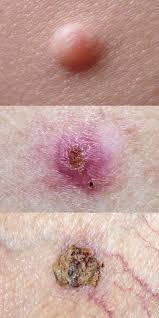Common Childhood Illnesses Treated by Paediatricians in Australia

Childhood is a time of rapid growth, discovery, and occasional health challenges. In Australia, paediatricians play a vital role in diagnosing, treating, and managing a wide range of common illnesses that affect children from infancy through adolescence. These specialists are trained to understand the nuances of child development and offer medical care tailored specifically to the needs of growing bodies. Here’s an in-depth look at some of the most common childhood illnesses treated by paediatricians in Australia and how parents can recognize and respond to them.
1. Upper Respiratory Tract Infections (URTIs)
One of the most frequently encountered illnesses in children, URTIs include the common cold, sinusitis, and sore throats. These infections are typically viral and spread easily in settings like schools and daycare centres. Symptoms often include a runny nose, cough, sneezing, mild fever, and congestion.
Paediatricians generally manage these infections through supportive care—rest, hydration, and sometimes paracetamol for fever. Antibiotics are not usually prescribed unless there’s a secondary bacterial infection. Educating parents on hygiene practices and when to seek medical help is a key part of the paediatrician’s role.
2. Ear Infections (Otitis Media)
Middle ear infections are particularly common among children under five. They often follow a cold or respiratory infection and can cause ear pain, fever, irritability, and trouble sleeping. In some cases, fluid may drain from the ear if the eardrum bursts.
While some cases resolve on their own, paediatricians may prescribe antibiotics if the infection is bacterial or if the child has recurrent ear infections. In cases of frequent ear problems, children may be referred for hearing tests or ear, nose, and throat (ENT) consultations.
3. Gastroenteritis
Gastroenteritis, often referred to as “gastro,” is an inflammation of the stomach and intestines, leading to symptoms like vomiting, diarrhoea, stomach cramps, and sometimes fever. It is usually caused by viral infections such as rotavirus or norovirus.
Dehydration is the main concern, especially in infants and young children. Paediatricians focus on rehydration strategies, advising on the use of oral rehydration solutions and when to seek hospital care. Preventive measures include good hand hygiene and vaccination (e.g., rotavirus vaccine).
4. Asthma
Asthma is a chronic respiratory condition that often begins in childhood. In Australia, it’s one of the leading causes of hospitalisation among children. Common symptoms include wheezing, coughing (especially at night), shortness of breath, and chest tightness.
Paediatricians play a critical role in diagnosing asthma, developing action plans, and monitoring the effectiveness of treatment, which may include inhalers, spacers, and corticosteroids. Managing asthma triggers such as dust, pollen, and exercise is also a key aspect of care.
5. Allergies and Eczema
Australian children are increasingly being diagnosed with allergic conditions, including food allergies, hay fever (allergic rhinitis), and eczema (atopic dermatitis). Symptoms vary widely and may range from skin rashes to breathing difficulties.
Paediatricians help identify allergens through clinical assessments and allergy testing. Management may include avoidance of triggers, antihistamines, topical creams, and in severe cases, anaphylaxis action plans and adrenaline auto-injectors. For eczema, moisturising routines and anti-inflammatory medications are commonly recommended.
6. Hand, Foot and Mouth Disease
Hand, Foot and Mouth Disease (HFMD) is a viral illness that primarily affects younger children. It causes fever, painful mouth sores, and a skin rash with red spots and blisters on the hands, feet, and sometimes the buttocks.
HFMD is highly contagious but usually mild. Paediatricians guide parents in managing symptoms at home and advise on keeping children home from school or daycare to prevent spreading the virus. Pain relief and fluids are the primary treatment methods.
7. Chickenpox (Varicella)
Although vaccination has significantly reduced the number of chickenpox cases in Australia, occasional outbreaks still occur. Chickenpox is a highly contagious viral illness marked by an itchy rash, fever, and general discomfort.
Paediatricians typically recommend symptomatic treatment including antihistamines for itching and paracetamol for fever. Vaccinated children usually experience a milder form of the illness. Parents are also advised to keep infected children away from others to limit transmission.
8. Tonsillitis and Strep Throat
Tonsillitis involves the inflammation of the tonsils, often due to viral or bacterial infections like Streptococcus. Symptoms include sore throat, difficulty swallowing, fever, and swollen glands.
Paediatricians determine the cause through clinical evaluation and may recommend throat swabs. Bacterial tonsillitis is treated with antibiotics, while viral infections are managed symptomatically. In cases of recurrent tonsillitis, surgical removal of the tonsils may be considered.
9. Urinary Tract Infections (UTIs)
UTIs in children may present with fever, irritability, poor feeding (in infants), or painful urination (in older kids). If left untreated, they can lead to more serious kidney infections.
Paediatricians diagnose UTIs with urine tests and typically prescribe antibiotics. In recurrent cases, further investigations like ultrasounds or referral to a paediatric urologist may be necessary.
10. Developmental and Behavioural Conditions
While not “illnesses” in the traditional sense, developmental delays, speech issues, and behavioural conditions such as ADHD and autism spectrum disorder are frequently assessed and managed by paediatricians.
Early diagnosis is key, and paediatricians often collaborate with psychologists, speech therapists, and occupational therapists to support the child’s development. They also work closely with schools and families to create supportive environments.
Final Thoughts
Paediatricians in Australia are at the heart of children’s healthcare, ensuring that both minor ailments and more complex conditions are managed with care and expertise. For parents, understanding the common illnesses that affect children—and when to seek professional advice—can make a world of difference in promoting a child’s healthy growth and wellbeing.
As Dr Shaun Segal once stated, “Paediatric care is not just about treating illness—it’s about nurturing a child’s journey to lifelong health.” With that mindset, parents across Australia can feel confident in the care their children receive.
https://theglobalnewz.com/wp-admin






